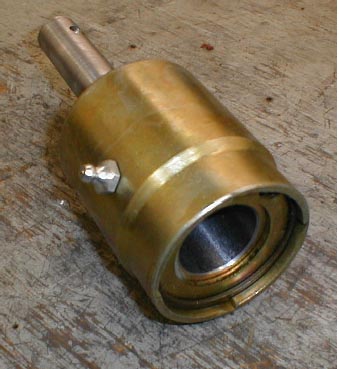Looking at it again I think what happened in that first run was the one-way clutch bearing let go. I hope it's gonna be up to the task.
Clutch locked the wheel up at about 10.5, steady climb to 13, one way let go (rpm sensor is on the housing, not the wheel). Brought the power back, bearing hooked back up at about 13K, motor dragged the wheel down to about 10.5 where the collet unscrewed and clutch let go, wheel coasted down.
CHT seems OK, EGT is wonky but I'm just using an Eagle Tree thermocouple for now.
I looked up the rating for the CSK15 clutch bearing, 13.5 nm which is about 10 ft.lb...













































